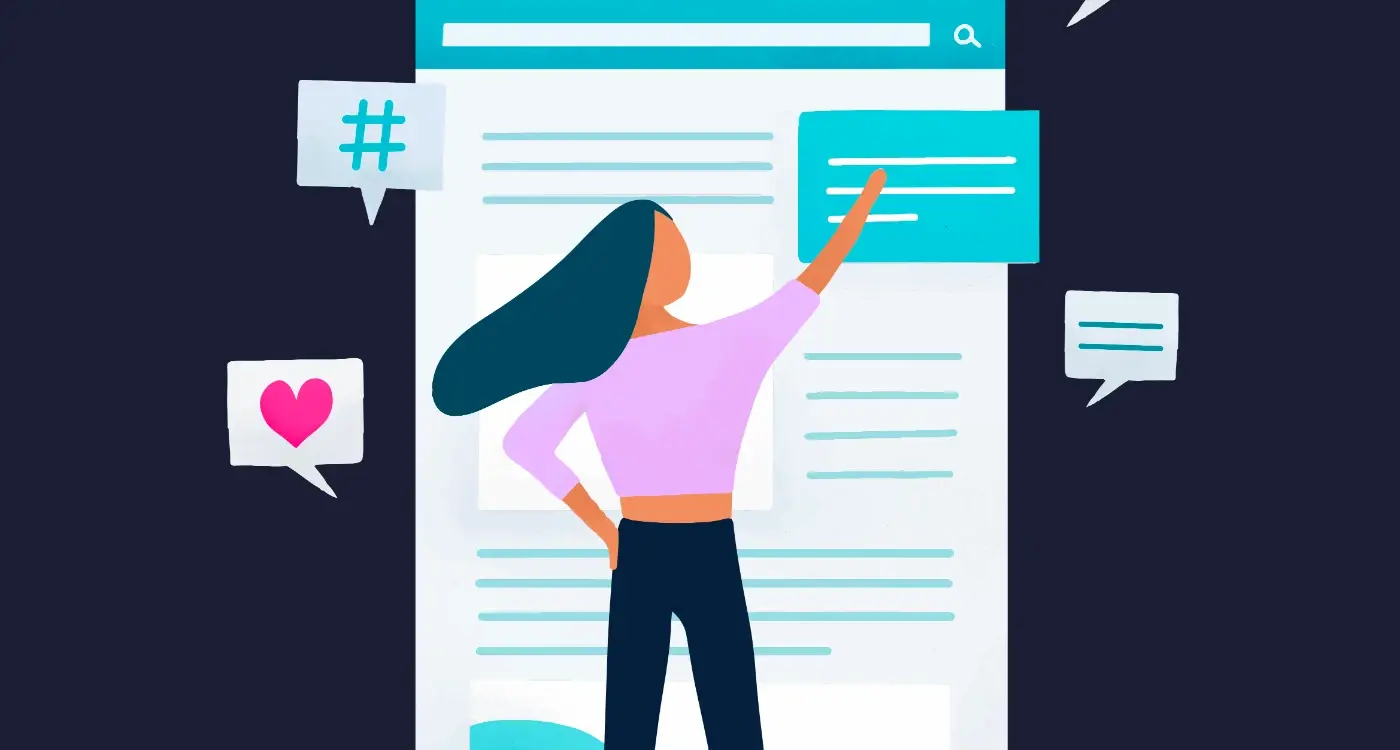What Are the Legal Requirements for Apps Built with Vibe Coding?
The legal landscape for apps built with vibe coding and AI-generated code is shifting faster than most developers can keep up with. What was considered legally acceptable just months ago might now put your app at risk of being pulled from stores or facing intellectual property disputes. This creates a real problem for developers who want to use these powerful AI tools but need to stay on the right side of the law.
At Glance, we've seen firsthand how confusing this space can be. Clients come to us with apps that use AI-generated code, worried about everything from data protection compliance to whether they actually own the code their AI assistant wrote. These aren't silly concerns—they're legitimate legal questions that need proper answers.
The challenge isn't just understanding current laws, but preparing for regulations that don't exist yet but probably will soon
This guide will walk you through the key legal requirements you need to know when building apps with vibe coding and AI-generated code. We'll cover intellectual property rights, data protection rules, app store compliance, and liability issues. By the end, you'll have a clear understanding of how to protect yourself and your app while making the most of AI development tools.
Understanding Vibe Coding and AI-Generated Code
Right, let's start with the basics—what exactly is vibe coding? I'll be honest, when I first heard this term I thought someone was having a laugh. But vibe coding is actually a real thing that's becoming quite popular with developers. It's basically a way of writing code where you describe what you want your app to do in simple, everyday language, and artificial intelligence tools help turn those descriptions into actual working code.
Think of it like this: instead of writing complex programming instructions, you might type something like "make a button that changes colour when someone taps it" and the AI figures out how to make that happen. The AI has been trained on millions of lines of code from other developers, so it knows the patterns and can generate working code based on your plain English description.
How AI-Generated Code Actually Works
The AI doesn't just copy and paste code from somewhere else—though that's a common misconception. These systems learn from existing code to understand programming patterns, then create new code based on what you ask for. It's a bit like how you might learn to cook by watching lots of cooking shows, then create your own recipes using the techniques you've picked up.
This means apps built with vibe coding can be just as unique and functional as traditionally coded apps; they're just created using a different method. The legal implications, though, are where things get interesting.
Intellectual Property Rights in AI-Generated Code
When I first started working with AI-generated code, I'll be honest—the legal side made my head spin a bit. Who actually owns the code when an AI writes it? Can you patent something that wasn't technically created by a human? These questions matter more than you might think, especially when you're building apps with vibe coding.
The tricky bit is that traditional intellectual property laws were written long before AI could write code. Copyright law typically protects work created by humans, but AI-generated code sits in a bit of a grey area. Most legal experts agree that the person or company using the AI tool would own the resulting code, but it's not set in stone everywhere.
Key Ownership Considerations
Here's what you need to think about when dealing with AI-generated code ownership:
- The AI platform's terms of service might claim rights to generated code
- Your input prompts and modifications could strengthen your ownership claim
- Third-party code that AI was trained on could create unexpected complications
- Different countries have varying approaches to AI-generated content
Always check the licensing terms of your AI coding platform before using generated code in commercial apps—some platforms retain certain rights or impose restrictions on commercial use.
The safest approach? Treat AI-generated code as a starting point rather than a finished product. When you modify, review, and integrate the code into your app, you're adding human creativity that strengthens your intellectual property position significantly. For more guidance on protecting your app's intellectual property during development, consider how to protect your app idea when working with remote developers.
Data Protection and Privacy Requirements
When you're building apps with Vibe Coding, data protection isn't something you can ignore—it's the law. The automated nature of AI-generated code means you need to be extra careful about how personal information gets collected, stored, and used. I've seen too many developers assume that because the AI writes the code, they don't need to worry about privacy compliance. That's completely wrong.
Under GDPR and UK data protection laws, you're still the data controller regardless of how your app was created. This means you need clear privacy policies, proper consent mechanisms, and secure data handling practices built into your Vibe Coding project from day one. Understanding what you need to know about GDPR when creating an app is crucial for compliance.
Key Privacy Obligations for AI-Generated Apps
- Implement lawful basis for data processing before collecting any personal information
- Provide transparent privacy notices that explain what data you collect and why
- Build in data subject rights like access, deletion, and portability requests
- Conduct Data Protection Impact Assessments for high-risk processing activities
- Ensure secure data storage with appropriate encryption and access controls
- Establish clear data retention periods and deletion processes
The tricky part with Vibe Coding is that you might not fully understand what data your AI-generated code is collecting. You need to audit the generated code carefully and test all data flows before launch. Remember, ignorance isn't a defence when regulators come knocking.
App Store Compliance and Guidelines
When you're building an app with vibe coding, you still need to play by the same rules as everyone else when it comes to app store approval. Apple and Google don't really care how your code was generated—they care about what your app does and whether it follows their guidelines. This is actually quite reassuring for developers using AI-generated code.
The main areas that trip people up are content policies, user data handling, and functionality requirements. Your AI-powered app needs to have a clear purpose, work properly, and not crash constantly. Both app stores are particularly strict about apps that collect personal information without proper disclosure or apps that don't actually do what they claim to do.
Content and Functionality Standards
App stores review the final product, not the development process. If your vibe coding creates an app that violates content guidelines—say, by generating inappropriate material or buggy features—that's your responsibility to fix before submission. The review process typically takes a few days to a week, and rejections are common for first-time submissions.
The app store review process is designed to protect users, not to make developers' lives difficult, though it certainly can feel that way sometimes
Make sure your app's description accurately reflects what it does, test everything thoroughly, and include proper privacy policies. These requirements apply regardless of whether your code came from traditional development or AI assistance—the end result is what matters for compliance. For a deeper understanding of why app store compliance matters, consider the broader implications for your app's success.
User Terms and Conditions for AI-Powered Apps
Writing terms and conditions for AI-powered apps isn't just about covering your legal bases—it's about being upfront with your users about what they're signing up for. I've seen too many apps get into hot water because they weren't clear about how their AI works or what data it needs to function properly.
Your terms need to explain exactly what your AI does and doesn't do. If your app uses machine learning to personalise content, say that clearly. If it processes user data to improve recommendations, spell it out. Users deserve to know when they're interacting with AI rather than traditional software.
Key Areas to Cover
- How your AI system works and what data it uses
- What happens to user-generated content that trains your AI
- Limitations of AI accuracy and potential errors
- User rights regarding AI-generated content
- Data retention policies for AI training
- Third-party AI services you might use
The tricky bit with AI apps is explaining liability when things go wrong. Your terms should be clear about what you're responsible for and what you're not—especially when AI makes mistakes or generates inappropriate content.
AI-Specific Considerations
Don't forget to address algorithmic bias and explain how users can report issues with AI behaviour. Many jurisdictions now require transparency about automated decision-making, so your terms might need to include information about how users can challenge AI-generated decisions that affect them. For detailed guidance on creating comprehensive terms, learn how to create mobile app terms of service.
Liability and Responsibility in AI-Generated Applications
When you're building apps with vibe coding and AI generated code, the question of who's responsible when things go wrong becomes surprisingly complex. I've worked with countless clients over the years who assume that using AI tools somehow shields them from liability—spoiler alert: it doesn't! The reality is that as the app owner, you're still on the hook for what your application does, regardless of whether a human or AI wrote the code.
The legal landscape around AI-generated applications is still evolving, but most jurisdictions treat AI as a tool rather than a separate legal entity. This means the responsibility falls back to you as the developer or business owner. If your AI-powered app makes a mistake that causes harm to users, you can't simply point to the AI and say "it wasn't me"—the courts won't buy that argument.
Key Areas of Liability
There are several specific areas where liability becomes particularly relevant for AI-generated apps:
- Algorithmic bias leading to discriminatory outcomes
- Data breaches caused by security vulnerabilities in AI-generated code
- Incorrect recommendations or decisions that harm users
- Failure to comply with accessibility requirements
- Infringement of third-party intellectual property rights
Protecting Your Business
The good news is that you can take steps to minimise your risk. Professional indemnity insurance is becoming increasingly important for AI-powered applications—many insurers now offer specific coverage for AI-related risks. You should also implement robust testing procedures for any AI generated code and maintain detailed documentation of your development process.
Always have a qualified developer review AI-generated code before deploying it to production. This human oversight can catch potential issues that might otherwise create liability down the line.
Remember that using AI tools doesn't change your fundamental responsibilities as an app developer. You're still required to meet all relevant app compliance standards, protect user data, and ensure your application works as advertised. The key is treating AI as a powerful assistant rather than a replacement for human judgment and oversight. Building trust with users is crucial, and learning how to get people to trust your mobile app becomes even more important when AI is involved.
Conclusion
Building apps with Vibe Coding brings exciting possibilities but—as we've covered throughout this guide—the legal requirements remain very much the same as traditional development methods. The code might be generated differently, but your responsibilities as a developer or business owner don't change.
What does change is how you approach certain areas. Intellectual property becomes trickier when AI generates your code; data protection needs extra attention when AI systems are involved; and your terms and conditions should clearly explain how AI powers your app. I've seen too many developers assume that because the AI did the work, they're somehow less responsible for the outcome.
The good news? Most of these legal requirements are manageable with proper planning. Get your privacy policy sorted early, understand the app store guidelines before you submit, and make sure your terms and conditions cover AI-generated content. Don't leave these as afterthoughts.
Working with Vibe Coding doesn't mean you need a team of lawyers on speed dial—but it does mean you need to be thorough. The technology is brilliant, but the legal groundwork still needs human attention and care.
Share this
Subscribe To Our Learning Centre
You May Also Like
These Related Guides

How Do You Handle User Content Rights in Your App?

What Are The Legal Requirements For App Onboarding And Privacy?



